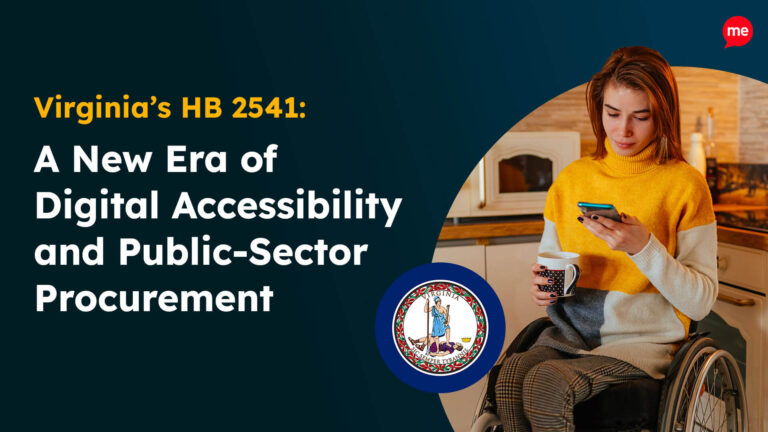Get A Free ADA Compliance Audit Of Your Website
Download NowCDC statistics show that one in four Americans has a disability. In Oklahoma, which has a population of over 4 million, that equates to over a million residents.
For individuals with disabilities, physical accessibility laws are insufficient because barriers in the online realm can also lead to inequality. Regardless of whether disabilities are physical or hidden, navigating digital platforms can pose significant challenges, putting disabled individuals at an unfair disadvantage in terms of accessing information, services, and resources.
In this handy guide, we’ll explore each piece of Oklahoma web accessibility legislation and explain how to avoid the pitfalls of an inaccessible website.
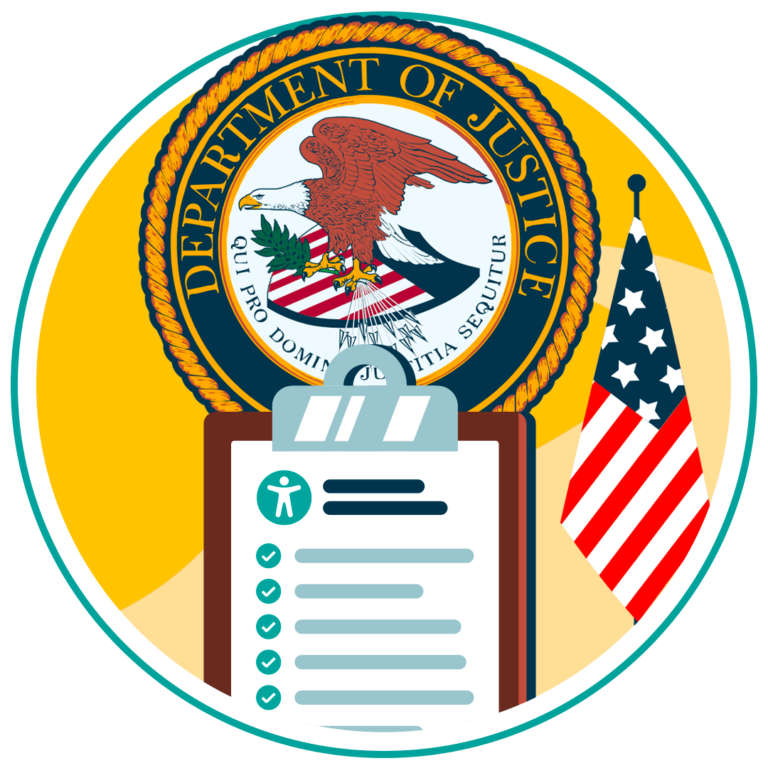
Web Accessibility Laws in Oklahoma
Businesses in every state must comply with federal digital accessibility legislature. However, to make compliance easier, more actionable, and most importantly, more widespread, Oklahoma has also enacted its own accessibility standards that local agencies must follow.
Let’s start with an overview of federal requirements before exploring Oklahoma’s state-specific web accessibility standards.
The Americans With Disabilities Act (ADA)
The Americans with Disabilities Act (ADA) was originally developed to address physical accessibility challenges. However, due to the proliferation of online technologies, key definitions have been expanded to encompass digital platforms, which are viewed as extensions of physical spaces.
Of the five Titles that comprise ADA legislation, three relate to website accessibility:
- ADA Title I: Employment – Employers must have an accessible website and provide inclusive candidate journeys for employees with disabilities.
- ADA Title II: Public Services and Programs – State authorities must ensure equal access to public services, programs, and activities for disabled citizens.
- ADA Title III: Public-facing Entities – All public-facing businesses and nonprofits must make reasonable adjustments to provide full and equal enjoyment of their goods and services.
Section 508
Enacted as an amendment to the Rehabilitation Act of 1973, Section 508 mandates that federal agencies and offices make their electronic and information technology (EIT) accessible to people with disabilities. This includes federal government employees as well as members of the public interacting with government services and resources online.
Online access barriers mitigated under Section 508 cover a wide range of technologies, including:
- Websites
- Web applications
- Documents
- Hardware
- Software
- Learning resources

Oklahoma’s Information and Communication Technology Accessibility Standards
The most up-to-date version of Oklahoma’s Information and Communication Technology Accessibility Standards came into effect in 2020. Issued by the Office of Management and Enterprise Services, the standards comprise a 20-page document detailing the minimum action necessary to ensure information and communication technology conforms to the standards defined in Section 508. The list of criteria covered includes, but is not limited to:
- Graphics and images
- Color contrasts
- Multimedia sounds
- Alt tags
- Forms
- Keyboard control
Stay ahead of the game when it comes to Digital Accessibility laws and compliance in the United States. Learn about all the different federal and state-level regulations, see real examples of web accessibility lawsuits in different regions and discover a 7-step action plan for building accessible websites.
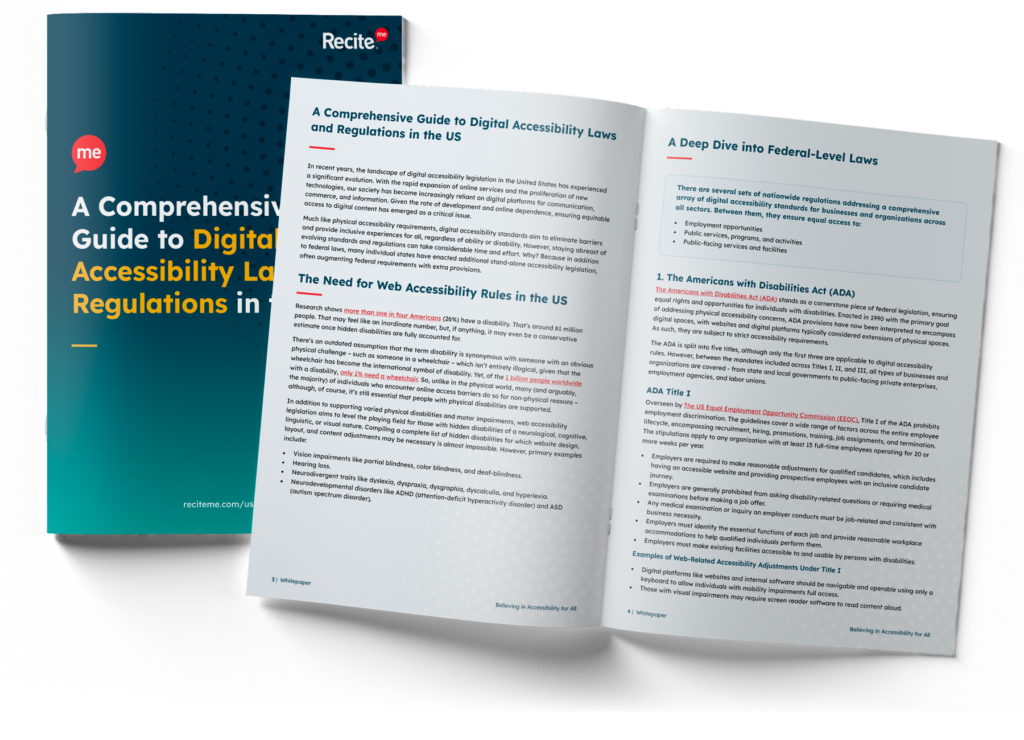
Which Businesses Do Oklahoma Web Accessibility Laws Apply To?
Private entities often dismiss Oklahoma’s digital accessibility laws based on the misunderstanding that they only apply to government agencies and offices. However, this is not the case. Section 508 and Oklahoma’s Information and Communication Technology Accessibility Standards also apply to third-party contractors and organizations receiving grants or state funding. So, a plethora of private entities can be affected, including:
- Technology, software, and telecommunications providers.
- Engineering and construction firms.
- Charities, conservation groups, research institutions, and community development organizations.
- Healthcare, finance, education, and transport organizations.
Furthermore, as Title III of the ADA applies to any public-facing entity, all for-profit businesses must take steps to ensure their online content is equally as accessible to individuals with disabilities as their non-disabled counterparts.
Consequences of non-compliance
The financial repercussions of non-compliance can be significant. At the current time, there are no fines attached to non-compliance with Oklahoma’s Information and Communication Technology Accessibility Standards. However, ADA and Section 508 violations can incur fines starting at $55,000 for the first breach, with subsequent breaches doubling to $110,000. Plus, legal action by private citizens and advocacy groups can result in costly legal fees, court proceedings, and settlement sums. So, the financial burden of non-compliance can be significant, particularly for small businesses with limited funds for unexpected expenses. This is particularly relevant in Oklahoma, as small businesses account for 99.4% of all enterprises statewide.
Of course, there is more to digital accessibility compliance than financial risk alone. For example, the negative PR associated with failing to include the disabled population could result in:
- Boycotts
- Limited market reach
- Loss of revenue
- Reduced brand loyalty
- Reduced employee morale
- Drop in shareholder confidence
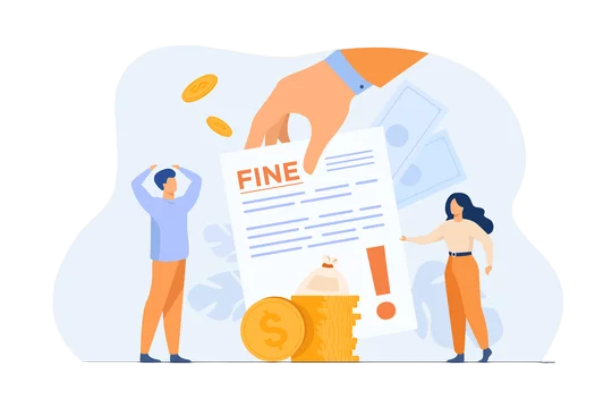
Notable Digital Accessibility Lawsuits in Oklahoma
Having established that web accessibility laws in Oklahoma can affect both public and private entities, let’s examine some of the most notable examples.
Legal Proceedings Against the State
In 2023, the Department of Justice (DoJ) announced that Service Oklahoma, a public entity offering a wide range of critical government services, had violated Title II of the ADA by maintaining a mobile app that was inaccessible to individuals with vision disabilities. The issue was brought to the DOJs attention after a blind resident filed a complaint because they could not follow the instructions to use the app using only head and eye movements. Service Oklahoma entered into a settlement with the DOJ. However, financial figures relating to the settlement amount are not currently publicly available.
Legal Proceedings Against Private Entities
In 2023, a visually impaired citizen named Angela Wahab filed lawsuits against Duncan-based Distinctive Decor and Oklahoma City clothing retailer Blue Seven, claiming that the companies’ websites were inaccessible to her and therefore in breach of ADA Title III. Both cases are still ongoing. However, with the cost of a lawsuit estimated at around $20,000, both business owners (Marcus McEntire and Caleb Arter) are expected to reach a settlement agreement rather than proceeding to court.
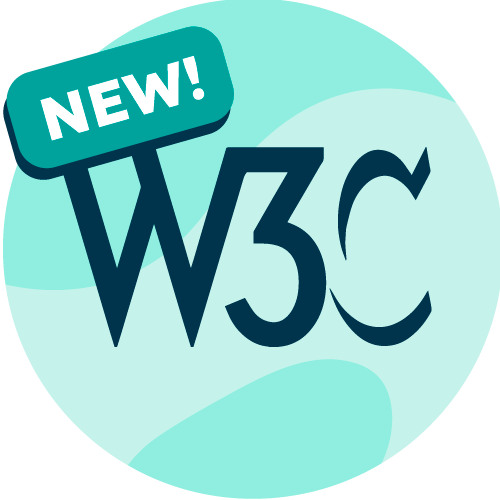
The Importance of WCAG Compliance
All state and federal web accessibility legislation in Oklahoma is based on the Web Content Accessibility Guidelines (WCAG). Developed by the World Wide Web Consortium (W3C), WCAG is the internationally recognized gold standard of digital accessibility best practices.
Current Oklahoma web accessibility legislation requires compliance with WCAG 2.0 Level AA – as per existing ADA and section 508 stipulations. However, as 75% of all federal claims reference the most up-to-date version, WCAG 2.1AA, enhanced compliance is recommended to avoid unnecessary risk. Plus, in 2022, the DOJ announced proposed changes to regulations, which would establish the Level A/AA criteria of the Web Content Accessibility Guidelines (WCAG) version 2.1 as the rules for Title II ADA compliance.

Free Accessibility Check of your Website
Finding accessibility issues is now easier than ever. Recite Me offers a free automated scan of your website’s homepage to highlight non-compliance. You’ll get recommendations on how to fix them, helping to improve your accessibility score.
How to Make Your Website Compliant with Oklahoma Web Accessibility Laws
Achieving compliance with Oklahoma’s web accessibility laws isn’t just about meeting legal requirements. It’s about fostering inclusivity and ensuring equal access for all individuals. Here’s a step-by-step guide on how organizations can make their websites accessible:
1. Improve Your Website’s Accessibility Status
Begin by evaluating your website’s current accessibility level using a tool like the Recite Me Accessibility Checker. By conducting 396 separate scans aligned with WCAG accessibility standards, the intuitive software identifies areas of non-compliance and generates a prioritized fix queue to ensure maximum accessibility in the shortest possible timeframe.
Schedule a free demonstration or run a free scan today!
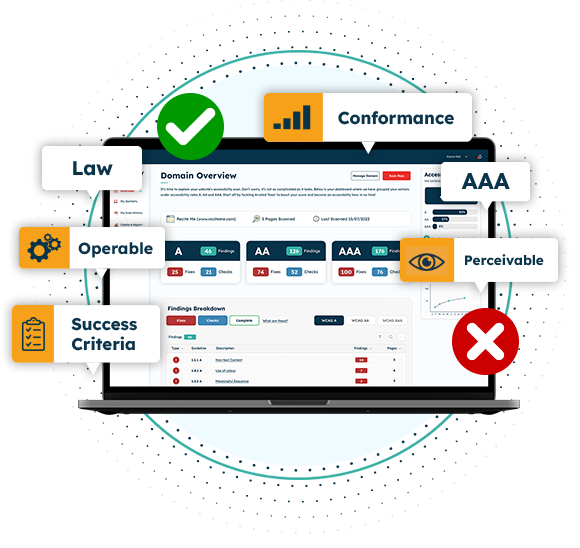
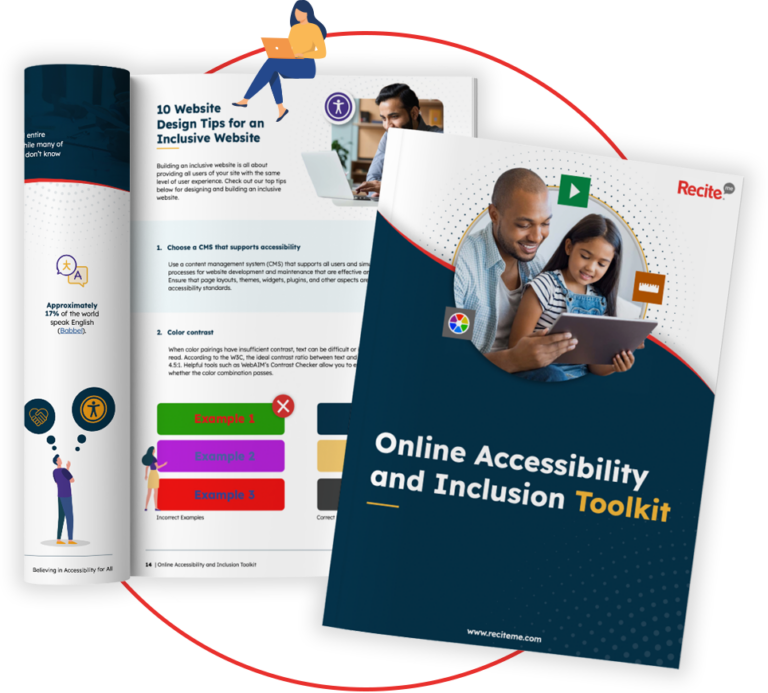
2. Educate and Train Your Team
Educate website development teams and content creators about web accessibility best practices, with a particular focus on legally mandated requirements. Provide training sessions and resources to ensure that everyone involved in website development understands their role in maintaining accessibility standards.
Access the tips and resources you need in Recite Me’s Free Accessibility and Inclusion Toolkit.
3. Provide Individual User Customization Options
Embedding accessibility software like the Recite Me Toolbar on your website allows users to adjust font sizes, color contrasts, language preferences, and more to suit their individual accessibility needs and requirements.
Schedule a free demonstration, or try the toolbar today!


